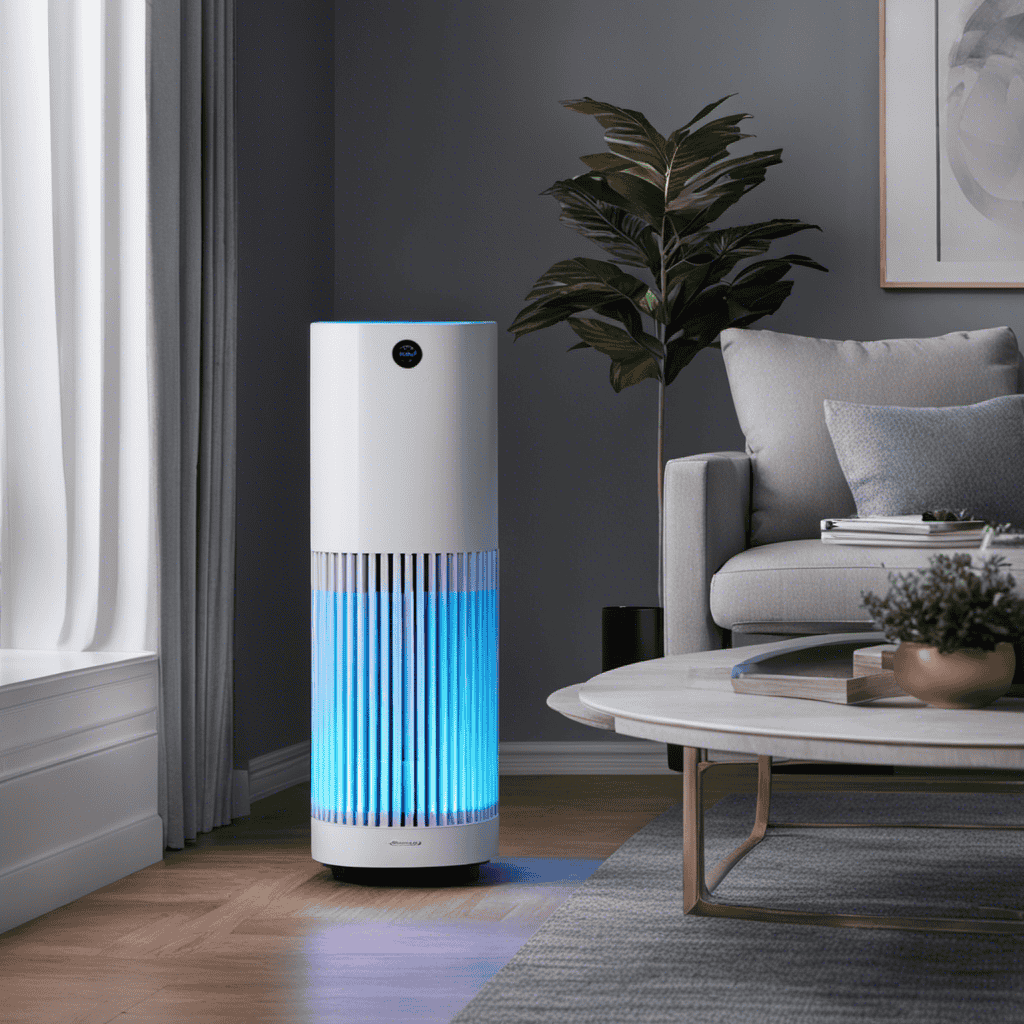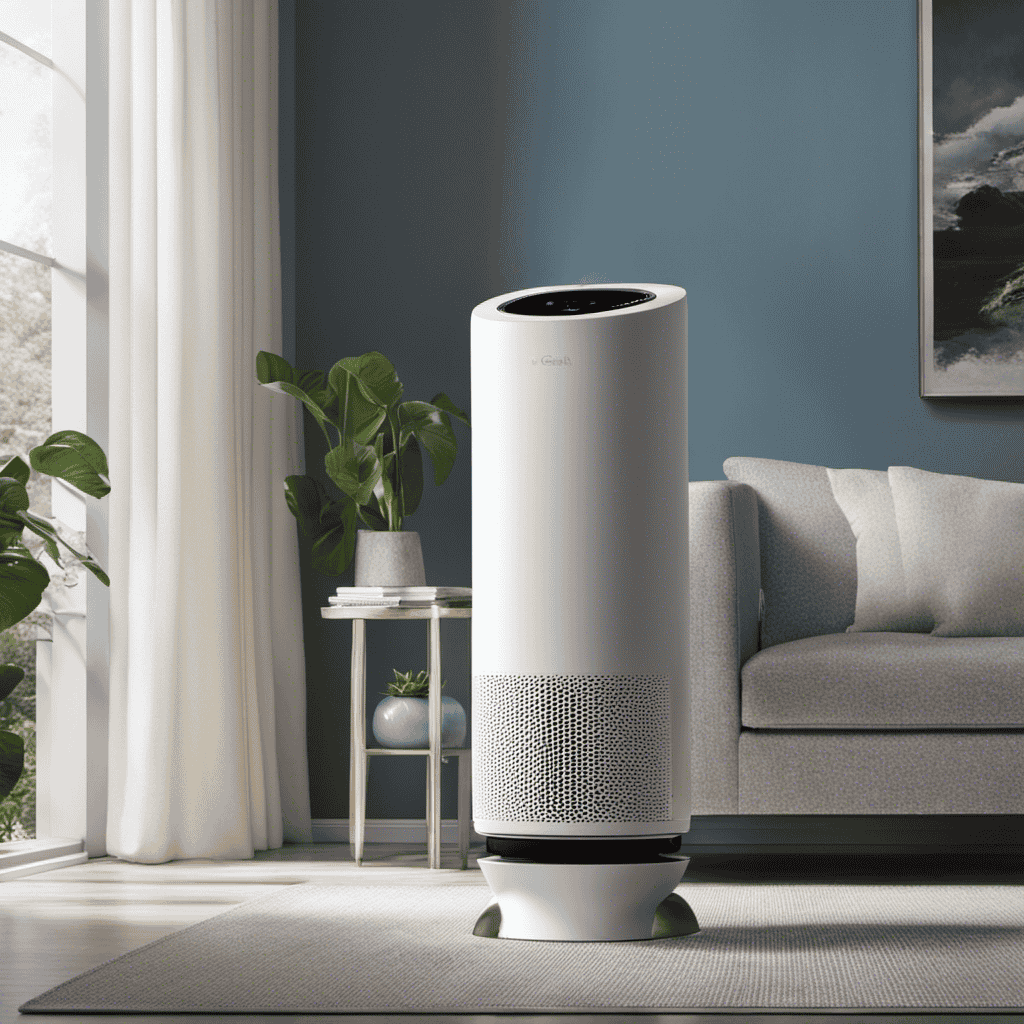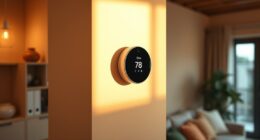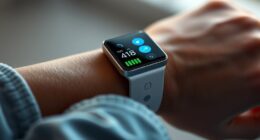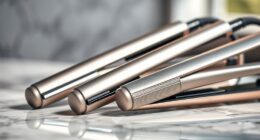Did you realize that indoor air contains a higher percentage of pollutants compared to outdoor air? This is why air purifiers are gaining popularity.
If you’ve ever wondered what ‘UV’ means on an air purifier, you’ve come to the right place. In this article, I will explain the role of UV light in air purifiers, specifically focusing on the UV-C technology.
We will explore the benefits of UV-C light in air purification and how it effectively eliminates germs and viruses.
Additionally, I will compare UV-C light to other air purification technologies and provide factors to consider when choosing an air purifier with UV-C technology.
So, let’s dive in and discover the wonders of UV in air purification.
Key Takeaways
- UV stands for ultraviolet light.
- UV-C wavelength is the most effective at destroying microorganisms.
- UV-C technology kills or deactivates harmful microorganisms.
- UV-C is used in air purifiers for germicidal action.
The Role of UV Light in Air Purifiers
If you’re wondering what UV means on an air purifier, it stands for ultraviolet light and plays an important role in killing bacteria and viruses in the air.
UV light is a type of electromagnetic radiation that is invisible to the human eye. It is divided into three categories based on wavelength: UV-A, UV-B, and UV-C.
When it comes to air purifiers, the UV-C wavelength is the most effective at destroying microorganisms. It has a shorter wavelength than UV-A and UV-B, making it more powerful in disinfecting the air.
However, it is important to understand that the effectiveness of UV-C in killing bacteria and viruses depends on the exposure time. The longer the exposure, the more effective it is at neutralizing harmful pathogens in the air.
Understanding the UV-C Technology in Air Purifiers
When it comes to air purification, UV-C technology plays a crucial role. UV-C refers to a specific type of ultraviolet light that is used to kill or deactivate harmful microorganisms in the air.
One of the key benefits of UV-C is its ability to eliminate bacteria, viruses, and mold spores, making it an effective tool in maintaining a clean and healthy indoor environment.
However, it is important to consider safety precautions when using UV-C, as direct exposure to this type of light can be harmful to humans and other living organisms.
UV-C for Air Purification
UV-C is a type of ultraviolet light used in air purifiers to help eliminate harmful germs and microorganisms. This technology is highly effective in disinfecting the air and creating a healthier environment. Here are four key applications of UV-C in air purification:
-
Germicidal Action: UV-C light has the ability to destroy the DNA of microorganisms, such as bacteria and viruses, preventing them from reproducing and spreading.
-
Airborne Particle Reduction: UV-C light can target and neutralize airborne particles like pollen, mold spores, and pet dander, reducing allergic reactions and respiratory issues.
-
Odor Elimination: UV-C light breaks down volatile organic compounds (VOCs) that cause unpleasant odors, leaving the air smelling fresh and clean.
-
Mold Prevention: UV-C light is an effective tool for preventing mold growth on air filters and surfaces, helping to maintain a clean and mold-free environment.
With these applications, UV-C technology in air purifiers provides an efficient and comprehensive solution for air disinfection.
Transitioning to the benefits of UV-C, let’s explore how it can improve indoor air quality even further.
Benefits of UV-C
To fully understand the benefits of UV-C technology, you should consider its ability to improve the overall air quality in your home or office. UV-C light is highly effective in killing bacteria, viruses, and other pathogens that can cause respiratory illnesses. This technology works by damaging the DNA or RNA of these harmful microorganisms, rendering them unable to reproduce and infect. In addition to its germicidal properties, UV-C light also helps to eliminate unpleasant odors and reduce the growth of mold and mildew. This can greatly benefit individuals with allergies or asthma, as it creates a cleaner and healthier indoor environment. The effectiveness of UV-C technology can be further enhanced when combined with other air purification methods, such as HEPA filtration.
| Benefits of UV-C |
|---|
| Kills bacteria, viruses, and pathogens |
| Eliminates unpleasant odors |
| Reduces mold and mildew growth |
Safety Considerations for UV-C
Make sure you take into account the safety considerations of using UV-C technology in your home or office. While UV-C technology is effective in killing germs and bacteria, it is important to use it safely to avoid any potential harm.
Here are some key safety considerations to keep in mind:
-
Exposure: UV-C light can be harmful to the skin and eyes, so it is crucial to limit exposure to the light and avoid direct contact.
-
Shielding: Ensure that the UV-C device you use has proper shielding to prevent any UV-C light from escaping and causing harm to humans or pets.
-
Time and Distance: Follow the manufacturer’s instructions regarding the recommended exposure time and distance for effective disinfection without putting yourself at risk.
-
Maintenance: Regularly clean and maintain your UV-C device to ensure its effectiveness and reduce the risk of any malfunctions or accidents.
Benefits of UV-C Light in Air Purification
Did you know that using UV-C light in air purification systems can have several benefits for you?
UV-C light has many applications in healthcare, including its use in air purification. One of the key benefits of using UV-C light in air purification is its ability to effectively kill bacteria, viruses, and other harmful microorganisms. UV-C light has been proven to deactivate these pathogens by damaging their DNA or RNA, preventing them from replicating and causing infections.
By incorporating UV-C light into air purification systems, you can greatly reduce the risk of airborne transmission of diseases.
Additionally, UV-C light can also help eliminate unpleasant odors and volatile organic compounds (VOCs) from the air, creating a cleaner and healthier indoor environment.
How UV-C Light Kills Germs and Viruses in Air Purifiers
UV-C light is an effective tool in removing germs and viruses from the air, making it an essential feature in air purifiers.
The effectiveness of UV-C light lies in its ability to disrupt the DNA and RNA of these microorganisms, rendering them unable to replicate and causing their ultimate demise.
UV-C Effectiveness Explained
You might be wondering how effective UV-C light is in air purifiers. Well, let me break it down for you.
UV-C light sources, which emit ultraviolet light at a specific wavelength, are commonly used in air purifiers to kill germs and viruses. Here’s why UV-C light is so effective:
-
Destroys DNA and RNA: UV-C light damages the genetic material of microorganisms, preventing them from reproducing and causing harm.
-
High Disinfection Rate: UV-C light can inactivate up to 99.9% of bacteria and viruses in the air, making it an incredibly efficient method of purification.
-
Chemical-Free Solution: Unlike other disinfectants, UV-C light doesn’t require the use of chemicals, making it a safe and environmentally-friendly option.
-
Continuous Protection: Air purifiers with UV-C light can provide continuous germ and virus removal, ensuring a clean and healthy environment.
With its ability to destroy microorganisms and provide continuous protection, UV-C light is a powerful tool in air purifiers for germ and virus removal.
Germ and Virus Removal
When it comes to germ and virus removal, using UV-C light in air purifiers is an effective and chemical-free solution.
UV-C light, emitted by germicidal lamps, has a specific wavelength range between 200 and 280 nanometers. This particular wavelength is highly effective in destroying the DNA and RNA of microorganisms, including germs and viruses. When these genetic materials are damaged, the microorganisms are unable to replicate and are rendered inactive.
UV-C light also has the ability to penetrate the cell walls of these microorganisms, further enhancing its germicidal properties.
By incorporating UV-C technology into air purifiers, harmful pathogens can be neutralized, creating a healthier and safer environment.
It is important to note that UV-C light should be used in conjunction with other air purification methods for optimal results.
Air Purifier Benefits
After discussing the importance of germ and virus removal in the previous section, let’s now explore the benefits of air purifiers in general. Maintaining your air purifier is crucial to ensure optimal performance and clean air quality. Here are the key benefits of air purifiers:
-
Removes airborne pollutants: Air purifiers effectively capture and eliminate various contaminants like dust, pollen, pet dander, and mold spores, improving the overall air quality.
-
Reduces odors: Certain air purifiers are equipped with activated carbon filters, which help eliminate unpleasant odors from cooking, pets, or smoke.
-
Allergen relief: For individuals with allergies or asthma, air purifiers can provide relief by reducing allergens in the air.
-
Improved sleep: By removing pollutants and allergens, air purifiers create a cleaner and healthier sleeping environment, promoting better sleep quality.
Now that we understand the benefits of air purifiers, let’s delve into the comparison between UV-C light and other air purification technologies.
UV-C Light Vs. Other Air Purification Technologies
If you’re wondering about the meaning of UV on an air purifier, UV-C light is one of the technologies used for air purification.
UV-C light is a type of ultraviolet light that has germicidal properties, meaning it can kill bacteria, viruses, and other microorganisms that may be present in the air.
When compared to ionization technology, UV-C light is more effective at neutralizing harmful pathogens.
While ionization technology works by releasing charged particles into the air to attach to and remove pollutants, UV-C light directly damages the DNA and RNA of microorganisms, rendering them unable to reproduce.
Additionally, UV-C light is also more efficient than HEPA filters in eliminating airborne pathogens, as HEPA filters primarily capture particles rather than neutralizing them.
Therefore, UV-C light is a powerful tool for air purification, providing a thorough and effective means of eliminating harmful microorganisms from the air.
Factors to Consider When Choosing an Air Purifier With UV-C Technology
When choosing an air purifier with UV-C technology, there are several factors to consider to ensure its effectiveness. Here are four key factors to keep in mind:
-
UV-C Intensity: The intensity of the UV-C light emitted by the purifier is crucial for its germicidal effectiveness. Higher intensity levels are generally more effective at killing bacteria, viruses, and other microorganisms.
-
Coverage Area: Consider the size of the room or space you want to purify. Ensure that the air purifier’s UV-C technology can cover the entire area effectively. A higher coverage area ensures that all the air in the room is treated.
-
Air Exchange Rate: Look for an air purifier that has a high air exchange rate, meaning it can filter and circulate the air in the room multiple times per hour. This ensures that the UV-C technology has sufficient contact time with airborne particles.
-
Filter Quality: UV-C technology works in conjunction with filters to trap larger particles before they reach the UV-C light. Therefore, consider the quality and efficiency of the filters used in the air purifier to maximize its overall effectiveness.
Frequently Asked Questions
How Much Does an Air Purifier With UV-C Technology Cost?
An air purifier with UV-C technology typically costs around $100 to $300. UV-C technology uses ultraviolet light to kill bacteria and viruses, providing an extra layer of filtration alongside the air purifier’s UV-C filters.
Can UV-C Light in an Air Purifier Be Harmful to Humans?
UV-C light in an air purifier has pros and cons. On one hand, it effectively kills bacteria and viruses, improving air quality. On the other hand, prolonged exposure to UV-C light can pose safety concerns for humans, potentially causing skin and eye damage.
Are All Air Purifiers With UV-C Technology Equally Effective in Killing Germs and Viruses?
All air purifiers with UV-C technology are not equally effective in killing germs and viruses. While UV-C is an effective disinfectant, its effectiveness depends on factors like exposure time and intensity.
Are There Any Maintenance Requirements for Air Purifiers With UV-C Technology?
Maintenance requirements for air purifiers with UV-C technology include regularly cleaning the UV-C lamp and replacing it when necessary. The benefits of UV-C technology on air purifiers include its ability to kill germs and viruses, improving indoor air quality.
Can an Air Purifier With UV-C Technology Eliminate Odors in Addition to Killing Germs and Viruses?
Yes, an air purifier with UV-C technology can eliminate odors while killing germs and viruses. It’s like a superhero for your air, fighting off the bad guys and leaving your space fresh and clean.
Can the UV Setting on an Air Purifier Help with Air Quality?
Many air purifiers come with a UV setting to help improve air quality. The UV setting on an air purifier can help eliminate airborne bacteria, viruses, and other harmful particles. By utilizing the UV setting, air purifiers can provide cleaner and healthier air for you and your family.
Conclusion
In conclusion, the UV-C technology in air purifiers is truly remarkable. It’s like having a tiny superhero inside your purifier, zapping all those pesky germs and viruses.
With its ability to eliminate up to 99.9% of airborne contaminants, it’s a force to be reckoned with.
So, if you want an air purifier that goes above and beyond, look for one with UV-C technology. Your air will thank you, and you can rest easy knowing you’ve got a secret weapon against those invisible invaders.
